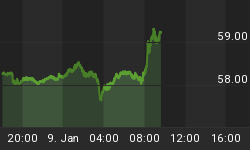Soon September Japanese Yen investors will have to decide whether to follow either Japanese economic policy for direction or continue to use risk as their guide as to whether to buy or sell the Yen.
Early Wednesday, Bank of Japan Deputy Governor Yamaguchi said he did not see the need to implement further monetary easing steps. The main reason for his opinion is because prices were expected to become more stable. If you follow the movement of the Yen on a day to day basis then I am sure you would have read at some point over the past few months that the Bank of Japan was very concerned about the volatility of the currency causing excessive price fluctuations.
Now that the global economy is showing signs of a bottom, Yamaguchi feels that the need to provide monetary stimulus may not be necessary because of recent stabilization in the value of the Yen. Reading between the lines, Yamaguchi feels the BoJ did the right thing at the right time to stimulate the economy but now the monetary policies which were implemented must be allowed to work. This thinking is in line with how the Federal Reserve and the European Central Bank feel about applying additional stimulus.
If you recall when the global financial crisis was at its peak, the Bank of Japan was very concerned about implementing steps to stabilize financial markets and to ease corporate finance. While their actual plans may not have been as aggressive as other central banks, it always stood by to act decisively if needed.
Furthermore, it was concluded that Japan's economic conditions were more severe than those of other nations. Let's face it, as a country that exists on exports, Japan was at the mercy of the economies of its trading partners. If the economies of Australia, China and the United States were down then the Japanese economy was going to suffer. Because of this, the BoJ was forced to implement strategies that kept the country afloat in order to buy time to allow its trading partners to recover.
Bank stabilization was very important to the Bank of Japan earlier in the year. The BoJ was very concerned that banking problems in the U.S. and Europe were going to have a huge negative impact on Japanese bank capital bases. As banking capitalization issues stabilized in the United States, these issues became less of a concern for the Bank of Japan.
The Bank of Japan was also very worried about the condition of the Japanese stock market and its effect on consumer sentiment. Basically, if the stock market kept going down, the BoJ was concerned that consumers would begin to lose confidence in the economy and quit spending. Stabilization in the equity markets and the subsequent rally has helped raise consumer confidence in the economy. Now the BoJ is waiting for this confidence to show up in the form of increased consumer spending. This will be a key report to watch as an important sign of a recovery.
Finally, everything seems to indicate that all the Bank of Japan needed was time to allow its fiscal and monetary policies to work their ways through the economy. All signs are pointing to price stabilization in the Japanese Yen. Whether investors see this as a buying opportunity seems to be up to the individual needs of the investors because lately the direction of the Japanese Yen has been subject to the amount of risk the investor wants to take.
When equity markets are weak, investors have been buying the Dollar and the Yen while selling the Euro, Australian Dollar and New Zealand Dollar. Take a look at what the September Yen did during June and the early part of July. As equity markets weakened substantially investors bought even more Yen versus the Dollar.
As the recovery begins to take hold, traders are once again showing their disdain for the Yen while seeking the higher yielding assets. So despite how the Bank of Japan feels about the price stability of the Yen, it really wants to see a lower Yen in order to trigger demand for Japanese Yen goods and services.
Technically, the September Japanese Yen main trend is up. This trend will remain up as long as 1.0555 holds. Once this price is violated the trend is likely to accelerate to the downside.
Recently this market held inside of major retracement support at 1.0615 to 1.0545. Based on the main range of 1.0555 to 1.0909, traders should begin to look for possible resistance to develop inside of a retracement zone at 1.0732 to 1.0774. This zone is very important today because Gann Angle resistance is at 1.0734. This creates a resistance cluster at 1.0732 to 1.0734. If sellers come in at this price cluster then look for the start of a break. This will be especially significant resistance if the equity markets take off sharply to the upside.















